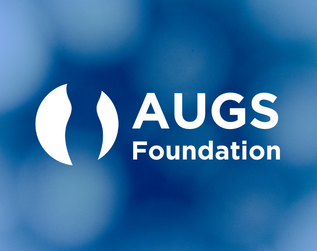The next call for applications will open in Summer 2025 with an expected start date of March 1, 2026.
All applicants must:
- Be a US citizen or permanent resident
- Be an active AUGS member
- Be an MD or DO (+/-PhD) with a faculty appointment
- Be within approximately 7 years of completion of FPMRS fellowship
- Have support from Chair/Division Director supporting the candidate’s commitment to complete the UrogynCREST program
- Have a commitment to pursue a research career as a physician-scientist in pelvic floor disorders
Required Documents:
- NIH-style biosketch – See attached template.
- Individual Development Plan – The IDP should be no more than 2 pages long detailing the following:
- Candidate’s background: describe past accomplishments, experiences, and unique skillsets (you do not need to duplicate detailed information included in the biosketch).
- Career goals and objectives: Include short and long term goals and specifically explain how these goals are related to the NIH’s Strategic Plan for Data Science.
- Career development plan: Explain how past, current and planned activities, as well as your proposed research project for this program will help ensure career progression.
- A Concept Proposal in an area of interest in pelvic floor disorders (up to 2 pages). Examples of previous concept proposals are located here. This does not need to be fully fleshed out, however, it does need to address the following areas (as appropriate) as best you can:
- Background
- Study question
- Study design
- Population
- Study variables of interest
- Comparison/Control
- Anticipated outcomes
- Covariates/confounders
- Statistical analysis
- Proposed database
There are many great ways to locate data repositories. This Resource Guide is maintained by the trans-NIH Biomedical Informatics Coordinating Committee (BMIC).
Each data repository will have a required process for requesting, housing, and using data that participants are responsible for following.
Some notable datasets that many urogynecologists are familiar with are:
- Two letters of support from individuals familiar with the candidate’s research activities
- One letter must be from Chair/Division Director supporting the candidate’s commitment to complete the UrogynCREST program. Letter should include:
- assessment of candidate’s ability to complete an online synchronized educational program and independent research project, culminating in completion of a peer reviewed manuscript
- what measures the chair/division director will take to ensure successful completion of this 2 yr program.
- One letter can be from a research collaborator and can be from outside of the candidate’s institution. Letter should include details on candidate’s involvement in prior collaboration and assessment of their current knowledge
- One letter must be from Chair/Division Director supporting the candidate’s commitment to complete the UrogynCREST program. Letter should include:


